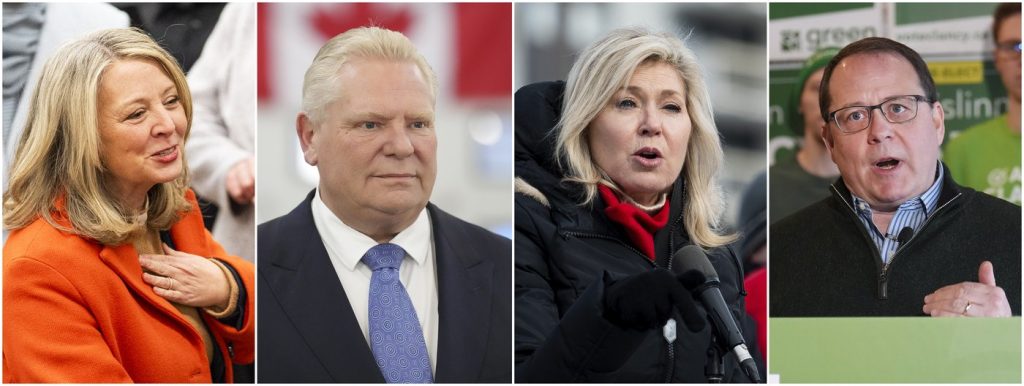Homeless encampments have become increasingly common in Brampton and Peel Region, prompting local officials and community groups to call for urgent action from the next provincial government.
According to the Region of Peel, outreach teams visited 82 encampments in Brampton, 110 in Mississauga, and 2 in Caledon in the first eight months of 2024. The estimated cost of managing these encampments is expected to exceed $8 million, while broader homelessness-related expenses, such as hotel accommodations, totaled $42 million in 2023.
With the Ontario election just days away, all three major party leaders have acknowledged the severity of the crisis and are proposing different approaches to tackling the issue.
Progressive Conservative (PC) Plan: More Shelter Capacity, Clearing Encampments with Legal Measures
Premier Doug Ford and the Progressive Conservative Party announced their $75.5 million plan in December, which aims to:
Expand shelter capacity and create temporary accommodations, such as modular housing units and semi-permanent structures ($20 million).
Support “ready-to-build” affordable housing projects across Ontario ($50 million).
Grant municipalities more power to dismantle encampments.
Ford has also suggested using the notwithstanding clause to override court rulings that prevent encampment removals without adequate indoor alternatives.
“Families deserve to enjoy their local parks and playgrounds without fearing for their kids. People facing homelessness or addiction and mental health challenges should be supported in the right settings,” Ford said.
Liberal Plan: Housing-First Approach with Mental Health and Addiction Support
Liberal Leader Bonnie Crombie has committed to a housing-first approach, prioritizing:
Building more affordable and supportive housing for Ontario’s estimated 70,000 to 80,000 homeless residents.
Providing mental health and addiction treatment for individuals struggling on the streets.
Crombie opposes Ford’s use of the notwithstanding clause to address encampments, stating:
“The answer to homelessness is housing, not legal loopholes.”
She also blamed Ford’s government for the rising homelessness crisis, saying:
“Every small town, every community—not just large cities—are seeing encampments. I don’t remember seeing them eight years ago. This is a failure of Doug Ford’s Ontario.”
NDP Plan: 60,000 Supportive Housing Units and More Mental Health Services
Ontario NDP Leader Marit Stiles unveiled her party’s strategy on February 5, focusing on:
Creating 60,000 new supportive housing units.
Transferring shelter system funding to the provincial government.
Expanding mental health and addiction treatment services.
Stiles criticized Ford’s handling of the crisis, stating:
“Doug Ford’s legacy is encampments in every town and city in our province. Seeing tents in parks is a stark reminder of how utterly Ford has failed Ontario—on housing, health care, and making life more affordable.”
She pledged to end chronic homelessness and eliminate encampments by ensuring individuals have a stable home with access to necessary support services.
Brampton Mayor Patrick Brown has supported clearing encampments for safety reasons, particularly those near the Etobicoke River, which is prone to flooding.
However, Brown acknowledged the challenge of moving individuals into shelters, noting that many are turned away due to drug use policies.
“Nine out of 10 overdoses in Peel are fentanyl-related,” Brown said. “We need to ensure that mental health treatment is available for those in desperate need.”
While the Ontario Superior Court has ruled that encampments cannot be dismantled without providing adequate indoor lodging, municipalities like Peel have relied on hotel placements to bypass shelter shortages. This costs approximately $52,000 per person annually.
With homelessness on the rise, the issue has become a key topic in the upcoming Ontario election. Voters will have to decide which party’s approach—whether Ford’s enforcement-heavy plan, Crombie’s housing-first model, or Stiles’ commitment to supportive housing—best addresses the crisis.
Ontario voters will head to the polls on February 27, 2025. Those who haven’t voted yet can still cast their ballot at their local returning office before Election Day.

